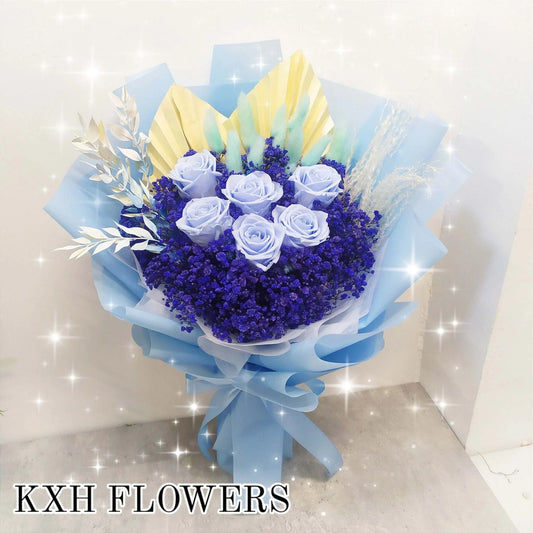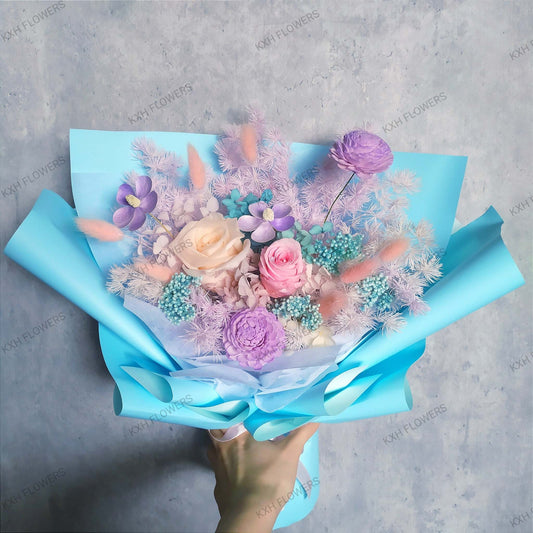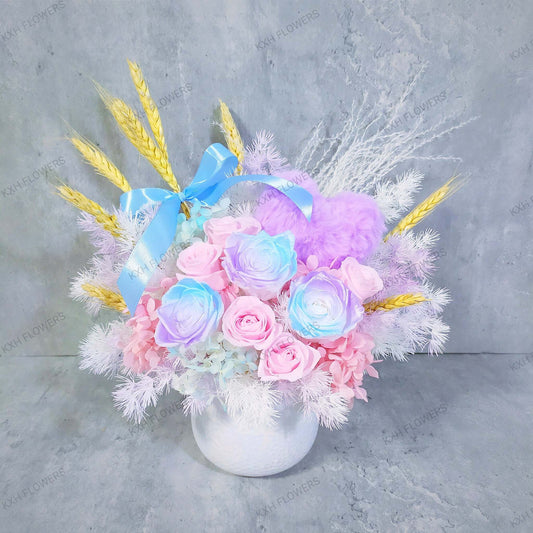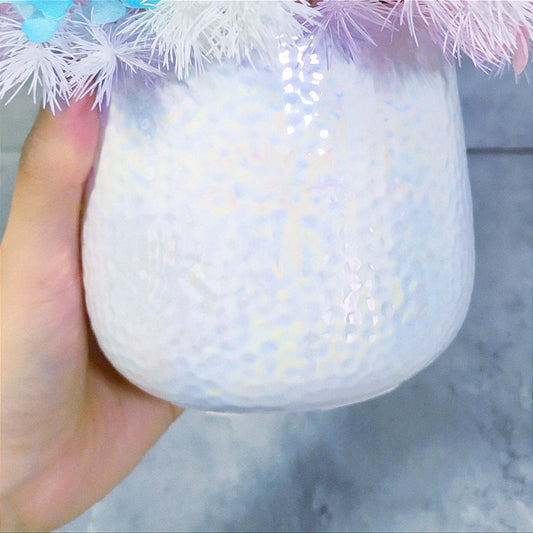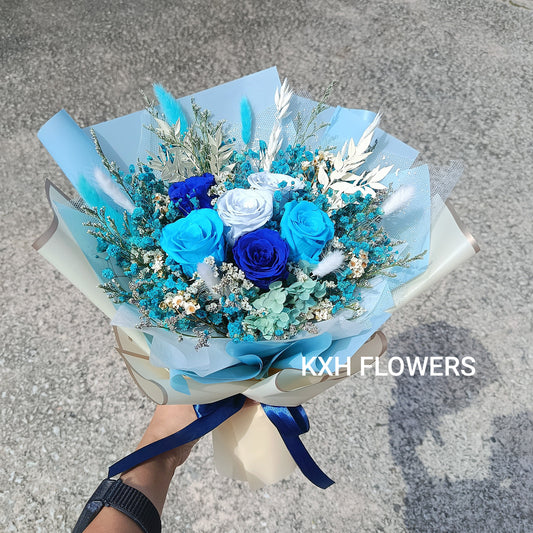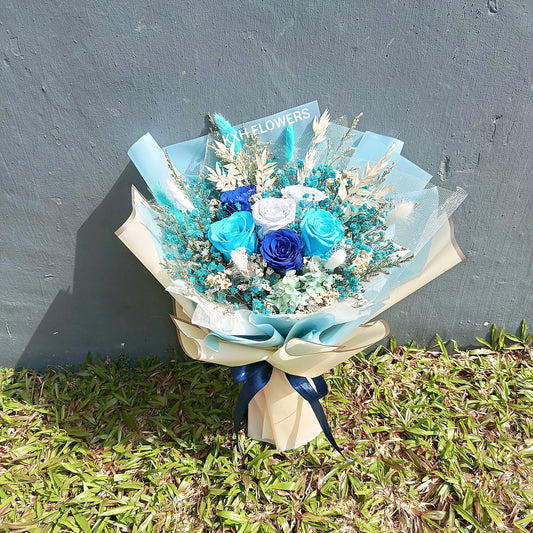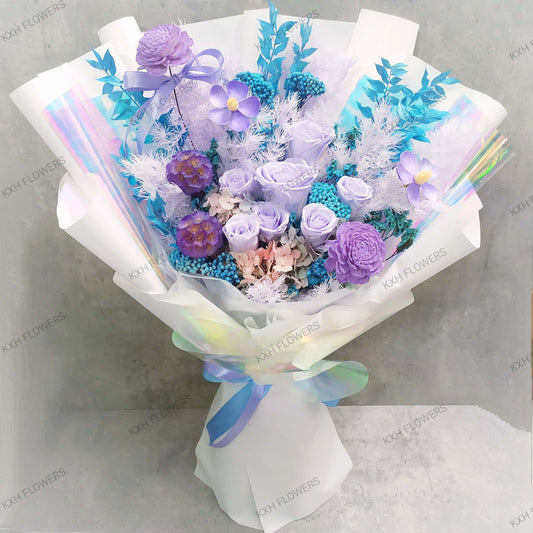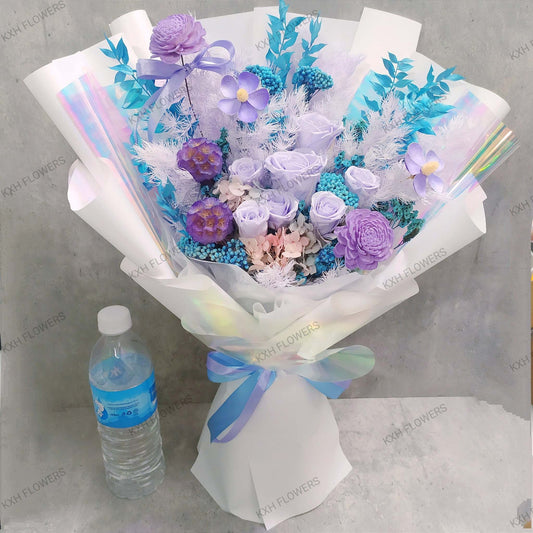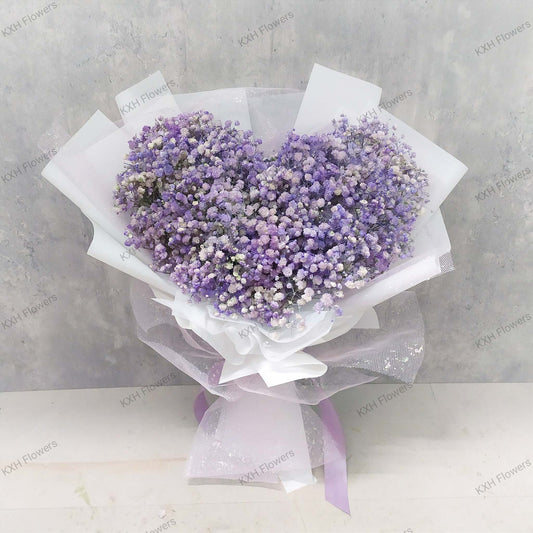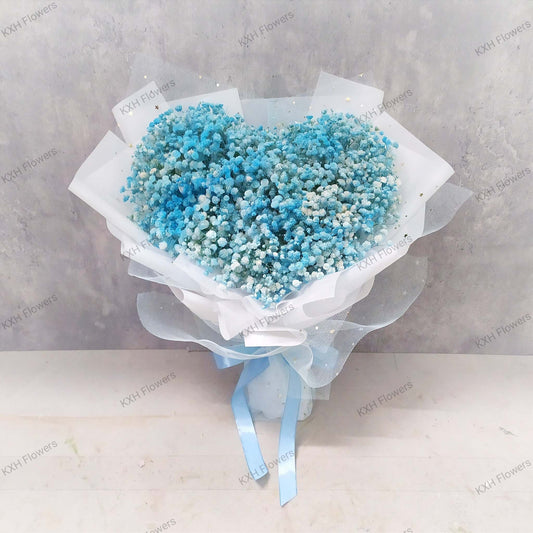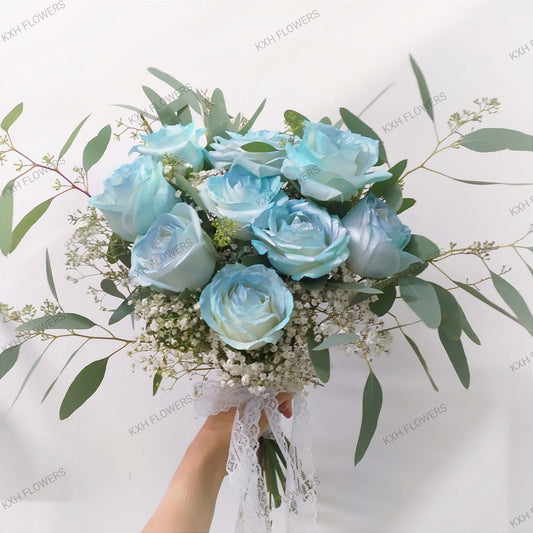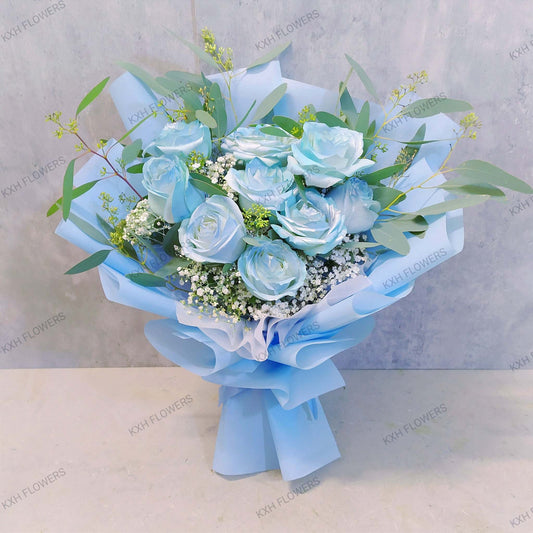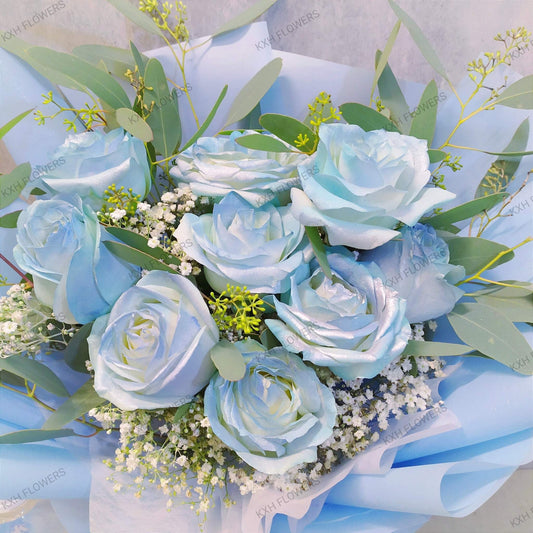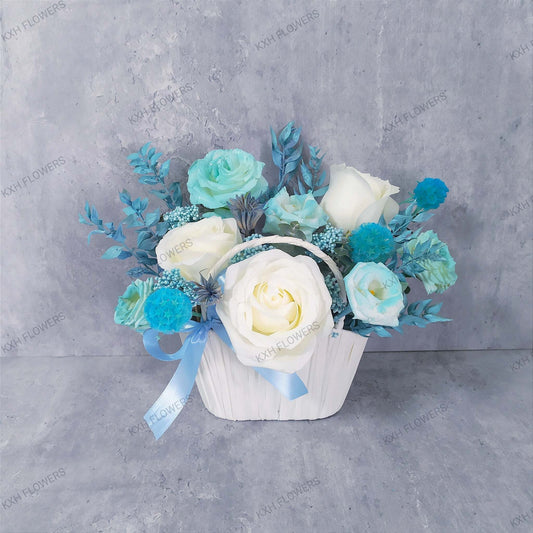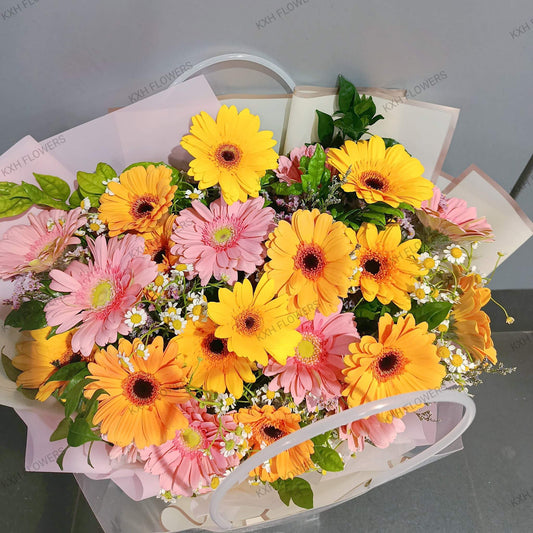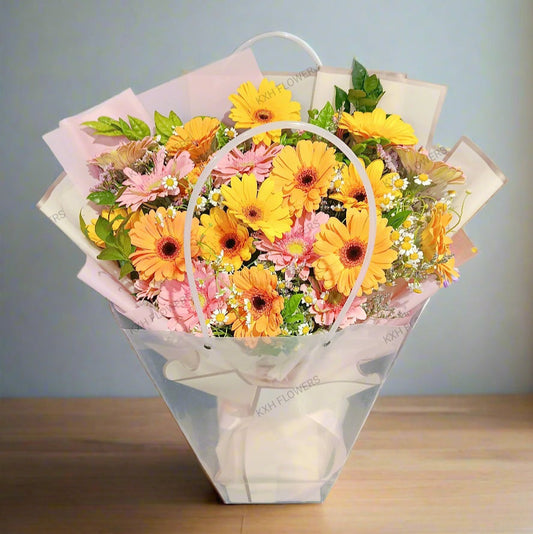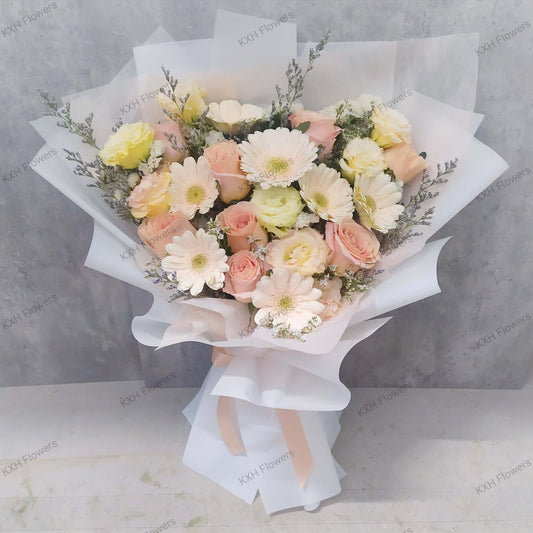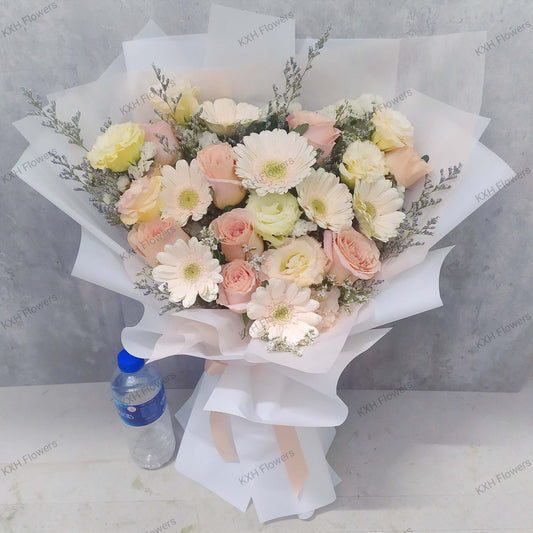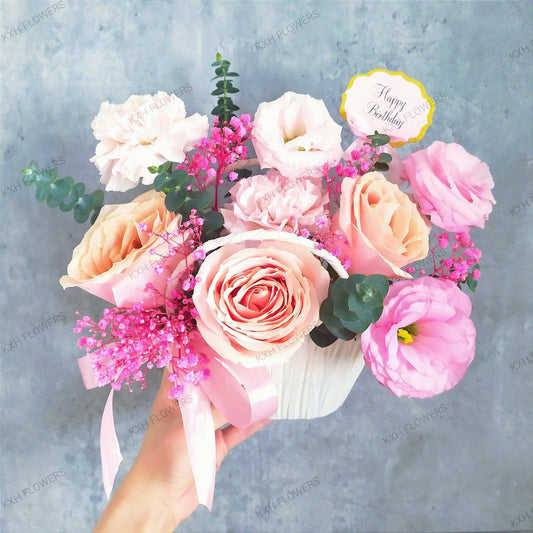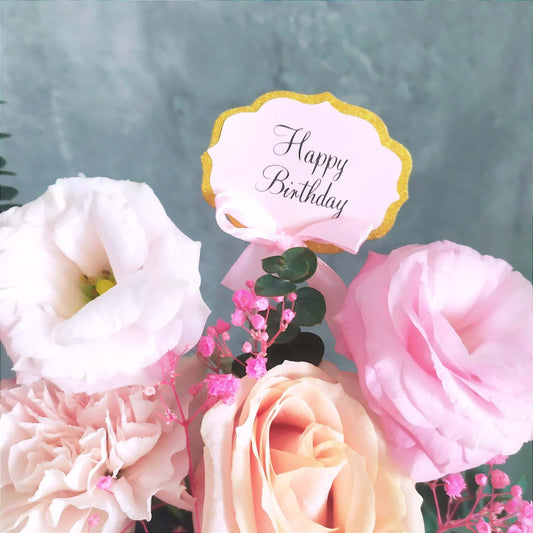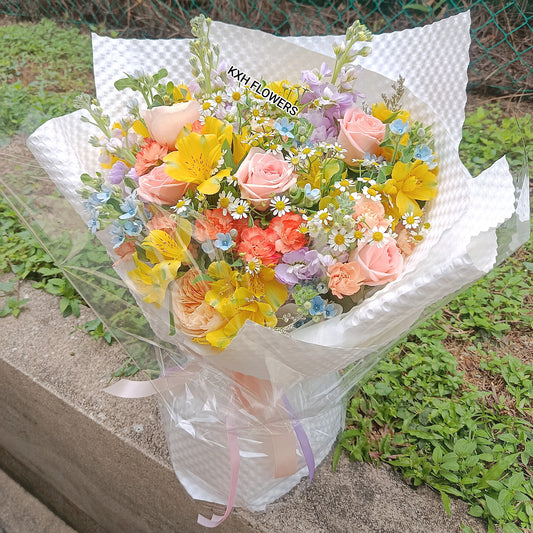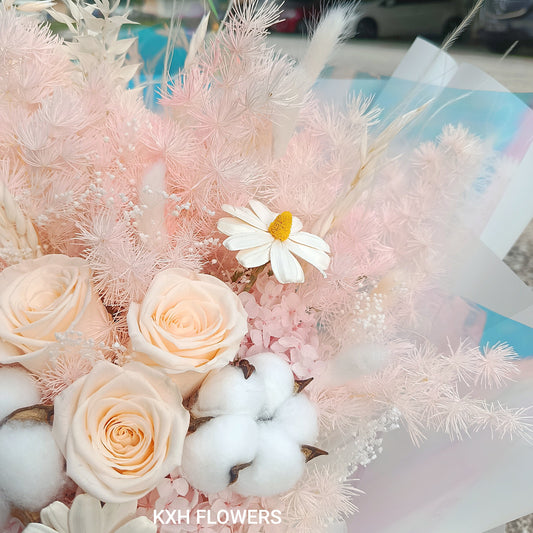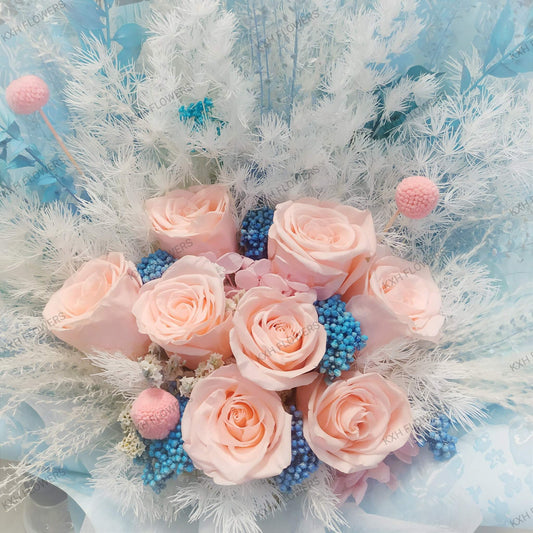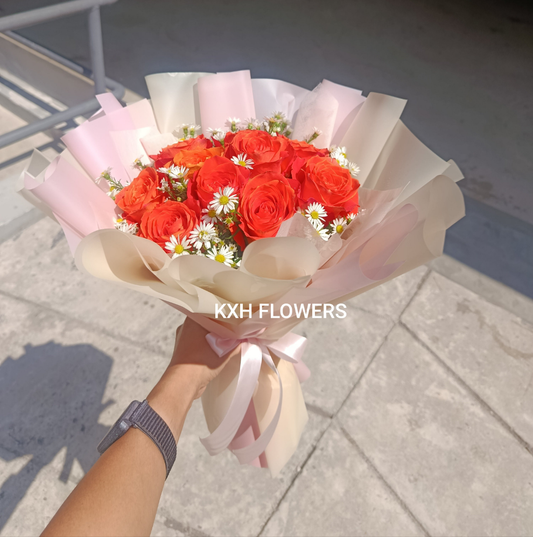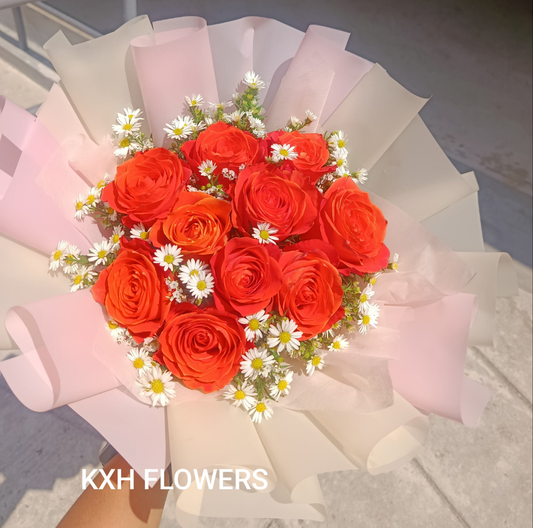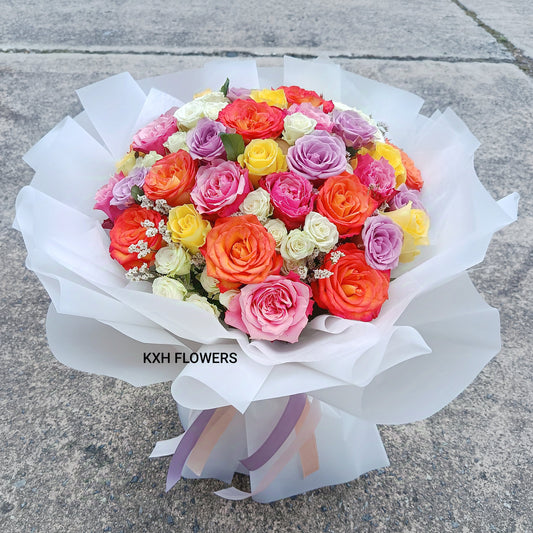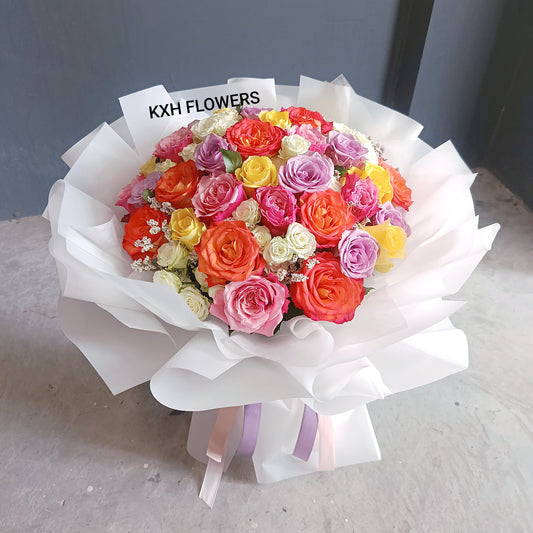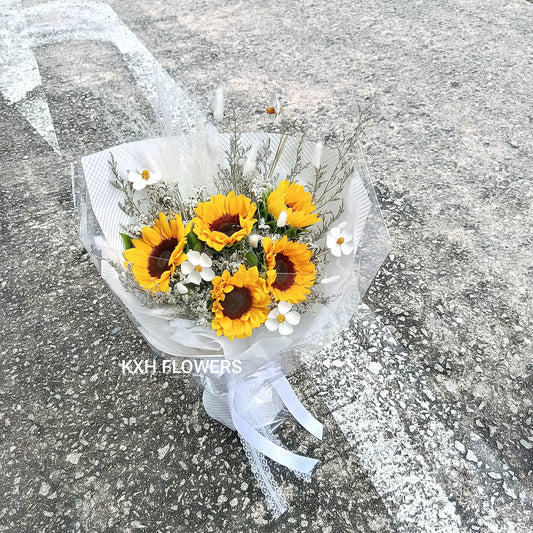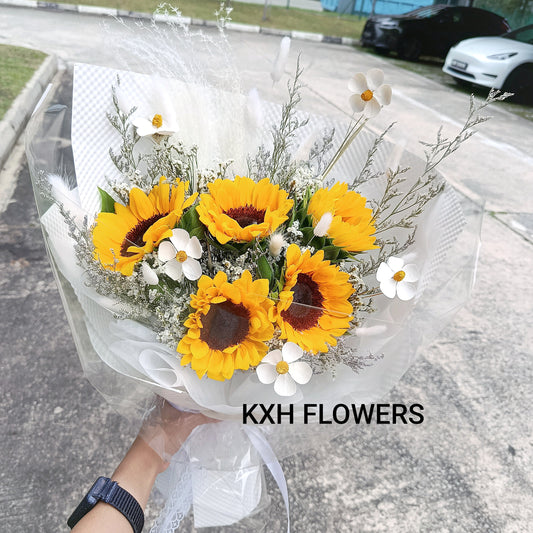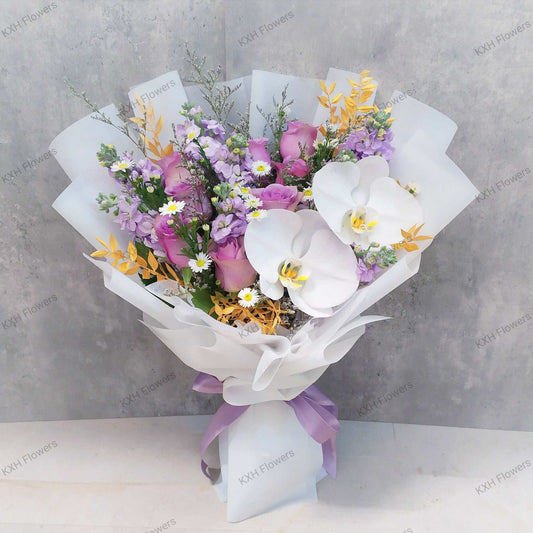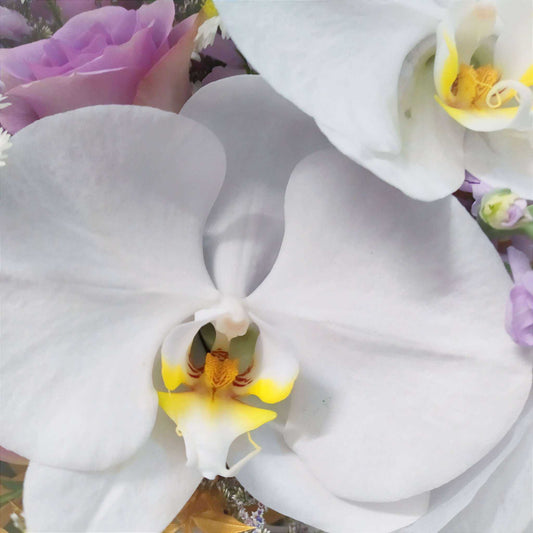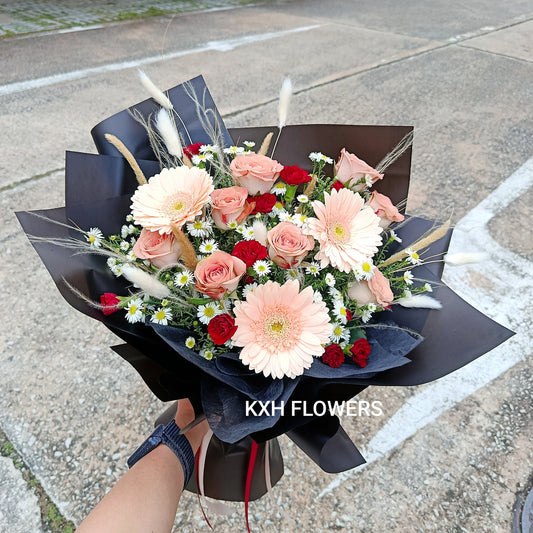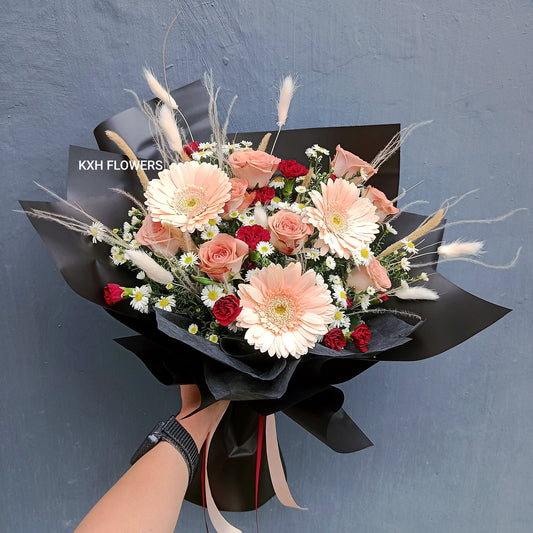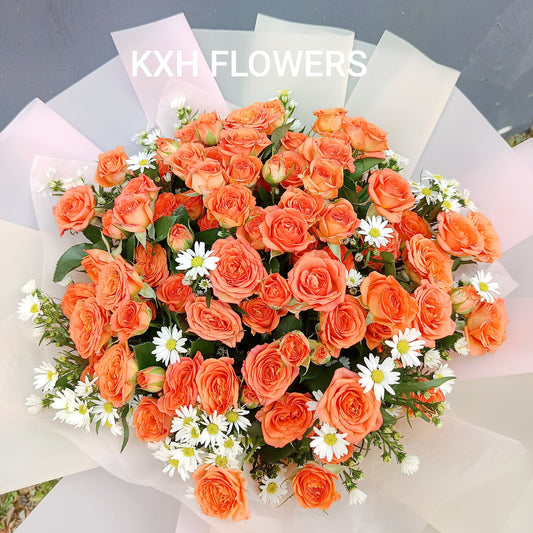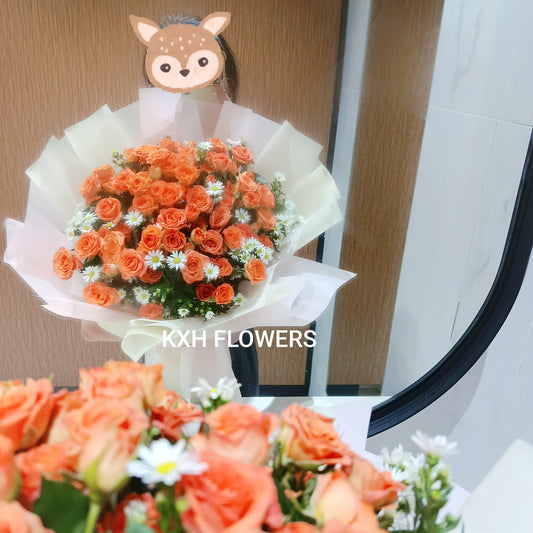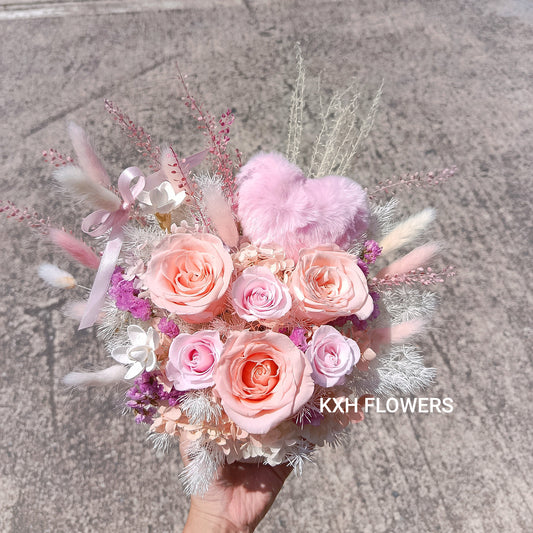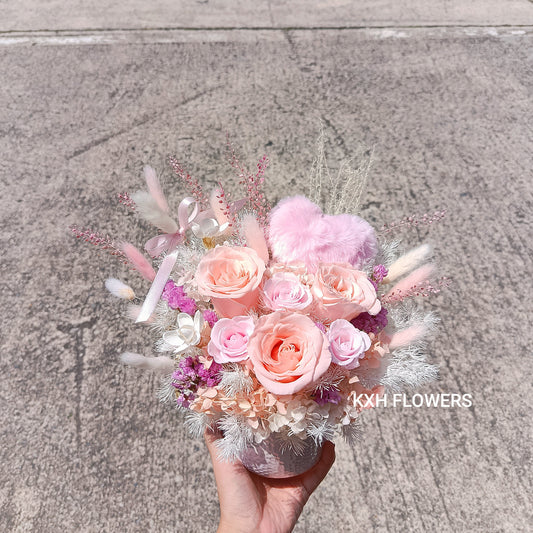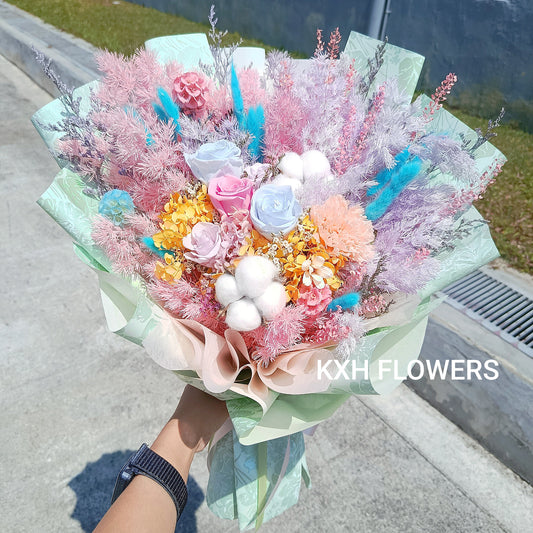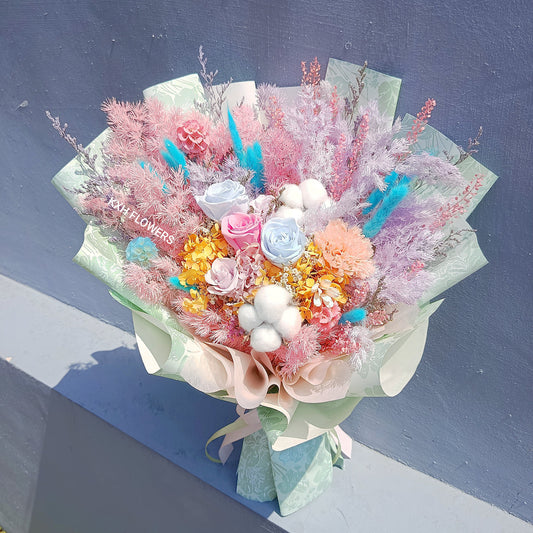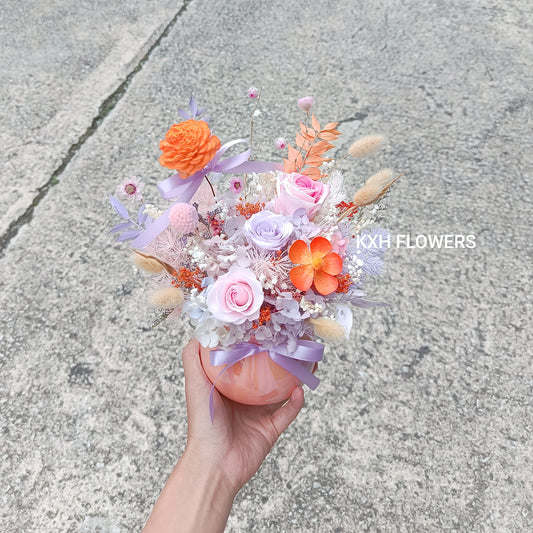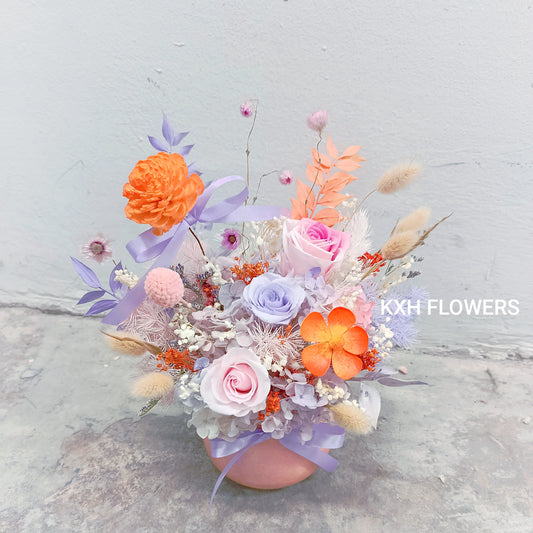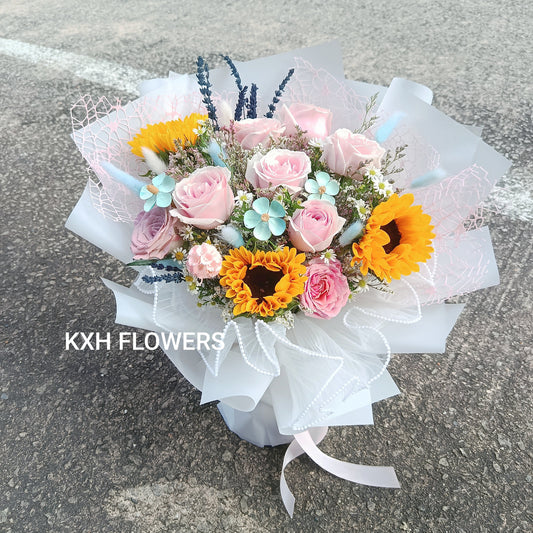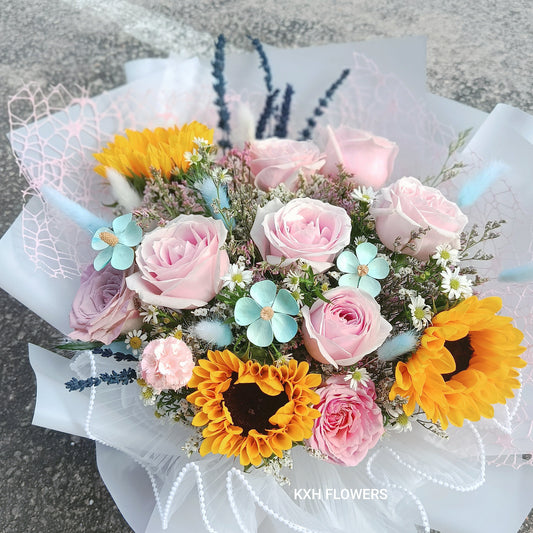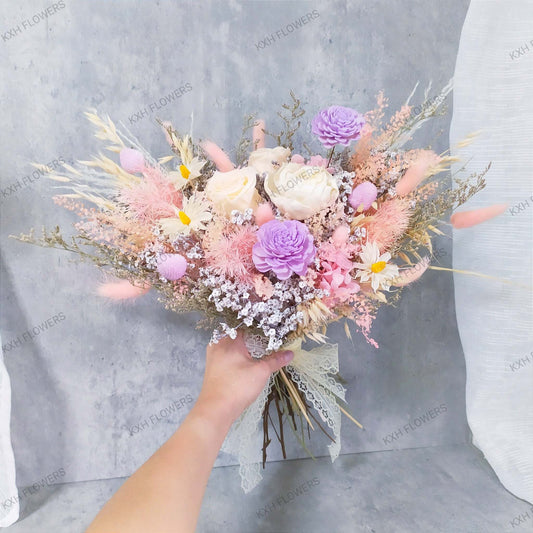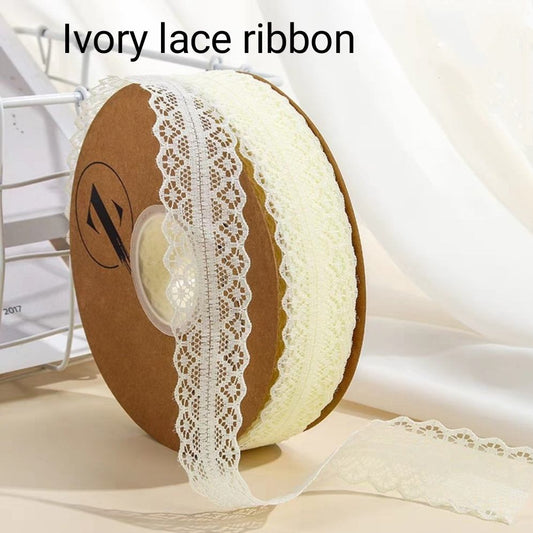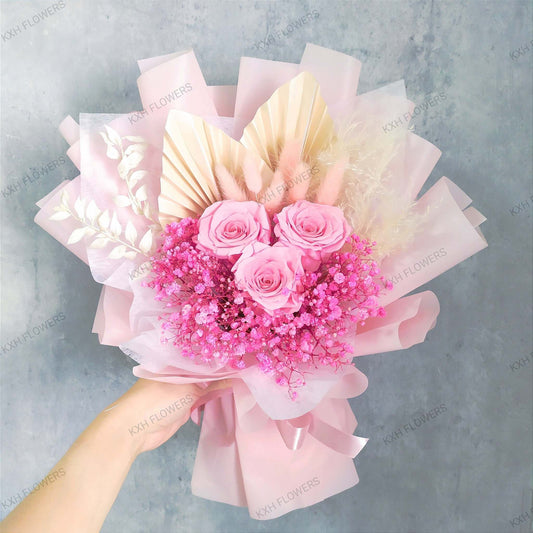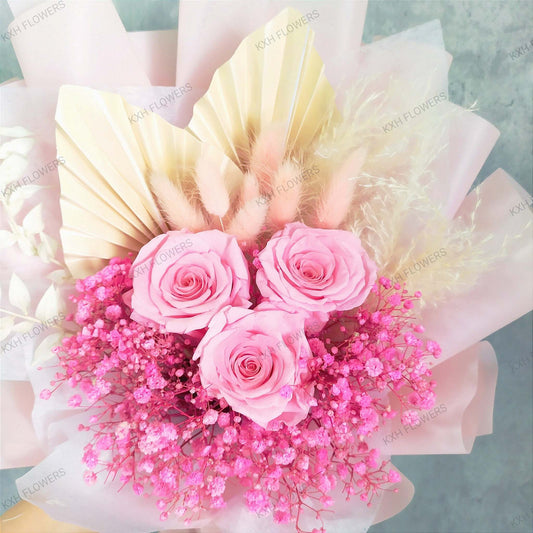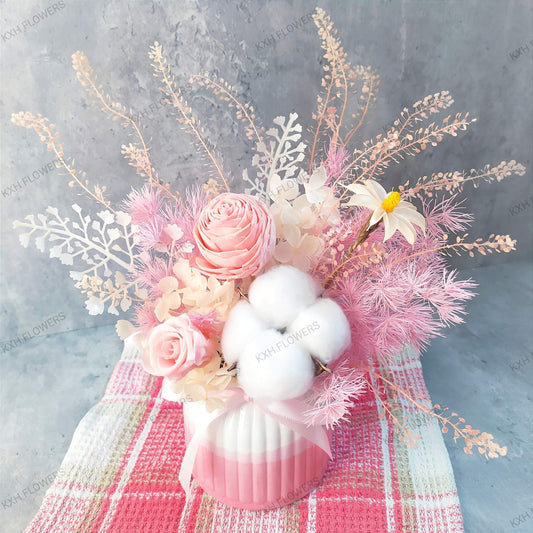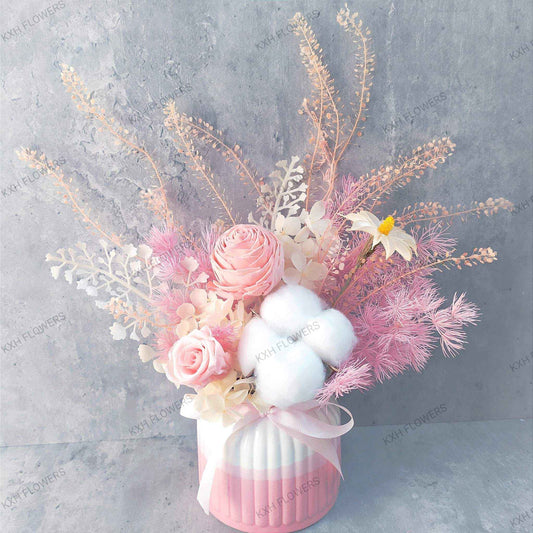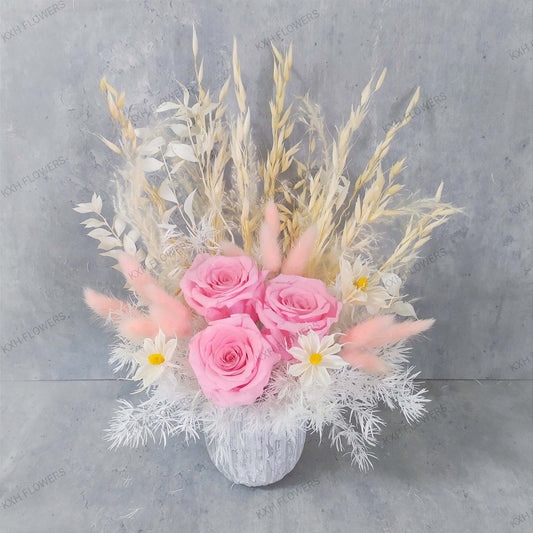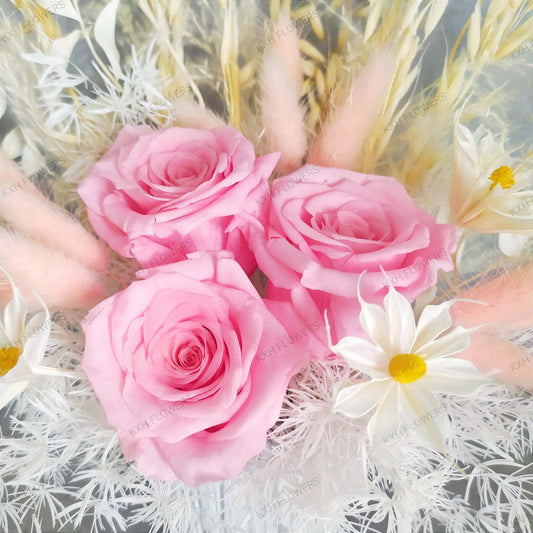Introduction: What Exactly Is The Difference Between Preserved And Artificial Flowers?
Flowers have long been cherished for their delicate beauty and ability to convey emotions. They grace our occasions and spaces, adding a touch of nature's elegance to our lives. In recent years, advancements in floral preservation and artificial flower manufacturing have expanded the options available for those seeking lasting floral arrangements. Preserved and artificial flowers offer unique benefits, but they also differ in terms of aesthetics, longevity, and environmental impact. In this article, we'll compare preserved flowers and artificial flowers, helping you make an informed choice when it comes to selecting the perfect floral decor.
Preserved Flowers: Capturing Nature's Grace
Preserved flowers are real blooms that have undergone a meticulous preservation process to maintain their natural appearance and feel. These flowers are harvested at their peak freshness and then preserved using techniques such as freeze-drying or glycerin preservation. The result are flowers that look and feel just like they've been freshly picked; maintaining their original color, shape, and texture for an extended period of time.
Advantages of Preserved Flowers:
Natural Aesthetics
Preserved flowers retain the delicate appearance and soft texture of real blooms, making them indistinguishable from their living counterparts. Moreover, during the preserving procedure, they can be dyed with many different colours not available in nature.
Longevity
Preserved flowers can last for 6 months to more than a year with minimal maintenance. They are an ideal choice for commemorating special occasions or decorating spaces that require a long-lasting touch of nature.
Minimal Maintenance
Unlike fresh flowers, preserved blooms require minimal maintenance. They simply need to be kept out of direct sunlight and out of contact with moisture. This makes them a convenient option for those with busy schedules.
Environmentally Friendly
Preserved flowers are a sustainable choice since they reduce the demand for frequent flower harvesting.
Disadvantages of Preserved Flowers:
Minimal Maintenance Does Not Mean No Maintenance
Even though they may be preserved, they are still subject to eventual disintegration as they ARE real flowers and foliages. Over time, all petals and leaves will crumble or shed. Certain varieties such as caspia, ming fern and pampas tend to start shedding at a faster rate. Though it may be indiscernible at the beginning, it can start as quick as a month after you've brought it home. This leaves a mess that not everyone is able or willing to tolerate.
Tendency to Crumble Faster in Humid Singapore
Moisture in the air results in degradation. What does that mean? For preserved roses and carnations, it means that the petals will turn translucent. Foliages and fillers might absorb the moisture and start to droop. Although this can be reversed once they are placed in a dry environment, this is not always possible in Singapore's weather.

Artificial Flowers: Crafting Perpetual Beauty
Artificial flowers, often made from materials like silk, polyester, or plastic, are meticulously designed to imitate real flowers. These flowers have come a long way in terms of realism and are available in an array of varieties and arrangements, catering to various preferences.
Advantages of Artificial Flowers:
Permanent Beauty
Artificial flowers remain unchanged over time, maintaining their appearance regardless of external conditions. They are a great option for creating consistent decor.
Infinite Variety
Since artificial flowers are not limited by natural seasons, you can find any flower variety at any time of the year, allowing for endless design possibilities.
Allergy Free
For individuals with allergies or sensitivities to pollen, artificial flowers offer a pollen-free alternative that still captures the essence of nature.
Truly No Maintenance Needed
Like preserved flowers, artificial flowers require minimal maintenance. They don't need water, sunlight, or specialized care. Unlike preserved flowers, they are easy to clean as well - you can use a wet tissue to gently wipe the petals or simply shake off any dust or debris trapped in between. This is not possible for preserved flowers as their longevity swiftly deteriorates when they come into contact with moisture.
Disadvantages of Artificial Flowers:
They Are Mostly Made of Plastic
It's impossible to ascertain if your "silk flowers" are actually made of silk. Technology has advanced so much that its impossible to distinguish plastic materials from natural ingredients simply by touch alone.
It's Not Easy to Find An Arrangement That "Looks Natural"
If you're after a soft, delicate and dreamy looking arrangement, there's a higher chance that you'll find what you want with dried and preserved flowers. Certainly not all, but many artificial floral arrangements have a rather hardy and strong look about them. It's typical to spend more time and effort looking for a soft and dreamy artificial arrangement than a fresh or preserved one.

Choosing Between the Two: Factors to Consider
Personal Aesthetic Preferences
If you're after the authentic look and feel of real blooms, preserved flowers might be your preference. If you're looking for variety and the ability to create unique designs, artificial flowers might be more appealing.
Longevity
Artificial flowers have the edge in terms of longevity, making them ideal for long-term decorations or sentimental gifts.
Environmental Impact
Both options offer sustainability benefits as they reduce the demand for fresh flowers - which are packed in plastic or foam to prevent damage during international transportation. But do keep in mind that artificial blooms, even "silk flowers" are usually made with polyester fabric, which simply put is plastic.
Allergy Considerations
If you or your loved ones have allergies, artificial flowers would be the safer choice.
Level of Maintenance Required
When it comes to time and effort spent caring for the blooms, artificial flowers win hands down. Some preserved flowers may have a strong chemical smell due to the preserving agent. This dissipates within a few days though. In addition, the humidity in Singapore means that eventually, preserved flowers will attract moisture in the long run even in an air-conditioned room. Preserved flowers will look great for 6 months, but not so great-looking after that. On the other hand, artificial flowers remain unchanged in the face of heat and moisture.
Conclusion
Both preserved and artificial flowers provide an excellent way to enjoy the beauty of flowers beyond their natural lifespan. Your choice will depend on your personal preferences, the intended use, exactly how long you want your flowers to last, and your environmental considerations. Both options offer unique benefits—preserved flowers bring the beauty of real blooms with longevity, while artificial flowers offer versatility and durability.
Preserved flowers capture the essence of nature, adding elegance to your home or event with their natural appearance and extended lifespan. On the other hand, artificial flowers offer a cost-effective and no maintenance solution, ideal for those seeking variety and durability without needing upkeep.
Other Related Posts:
How To Care For Preserved Flowers?
8 Best Flowers To Air-Dry At Home For Beginners
At KXH Flowers, we offer a stunning selection of preserved flowers that retain their natural charm, perfect for creating long-lasting memories. Each arrangement is meticulously crafted to celebrate love and style, reflecting your unique aesthetic.
Explore our collection today and let us guide you in selecting the perfect floral arrangements to suit your needs.






